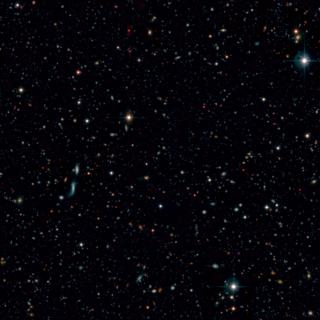Bibcode
Polednikova, J.; Ederoclite, A.; Cepa, J.; de Diego, J. A.; González-Serrano, J. I.; Bongiovanni, A.; Oteo, I.; Pérez García, A. M.; Pérez-Martínez, R.; Pintos-Castro, I.; Ramón-Pérez, M.; Sánchez-Portal, M.
Referencia bibliográfica
Astronomy and Astrophysics, Volume 578, id.A121, 5 pp.
Fecha de publicación:
6
2015
Revista
Número de citas
1
Número de citas referidas
1
Descripción
Fast brightness variations are a unique tool to probe the innermost
regions of active galactic nuclei (AGN). These variations are called
microvariability or intra-night variability, and this phenomenon has
been monitored in samples of blazars and unobscured AGNs. Detecting
optical microvariations in targets hidden by the obscuring torus is a
challenging task because the region responsible for the variations is
hidden from our sight. However, there have been reports of fast
variations in obscured Seyfert galaxies in X-rays, which rises the
question whether microvariations can also be detected in obscured AGNs
in the optical regime. Because the expected variations are very small
and can easily be lost within the noise, the analysis requires a
statistical approach. We report the use of a one-way analysis of
variance, ANOVA, with which we searched for microvariability. ANOVA was
successfully employed in previous studies of unobscured AGNs. As a
result, we found microvariable events during three observing blocks: in
two we observed the same object (Mrk 477), and in another, J0759+5050.
The results on Mrk 477 confirm previous findings. However, since Mrk 477
is quite a peculiar target with hidden broad-line regions, we cannot
rule out the possibility that we have serendipitously chosen a target
prone to variations.
Proyectos relacionados

Evolución de Galaxias
El estudio de la evolución de las galaxias es un tema crucial de la Astronomía Extragaláctica moderna. Permite vincular las galaxias locales con las primeras que existieron en el universo. Pero para poder abordarlo es preciso obtener censos estadísticamente significativos de galaxias de distintas luminosidades, a distintas distancias
Jorge
Cepa Nogue